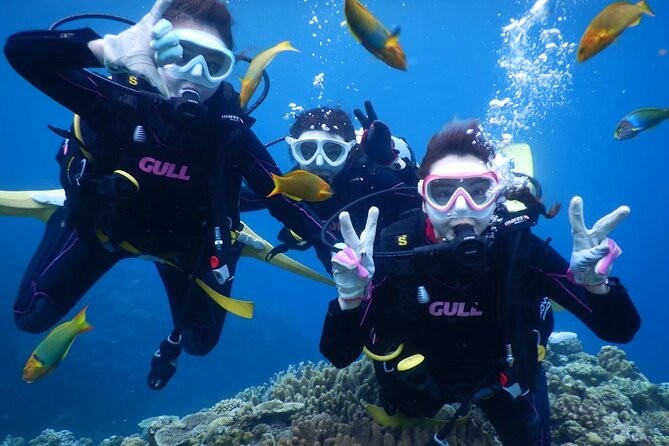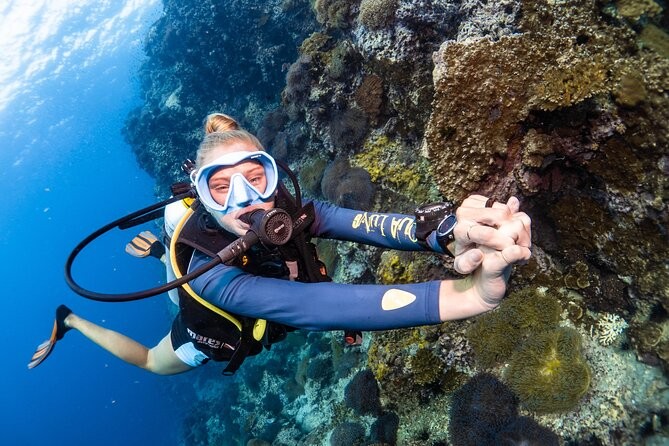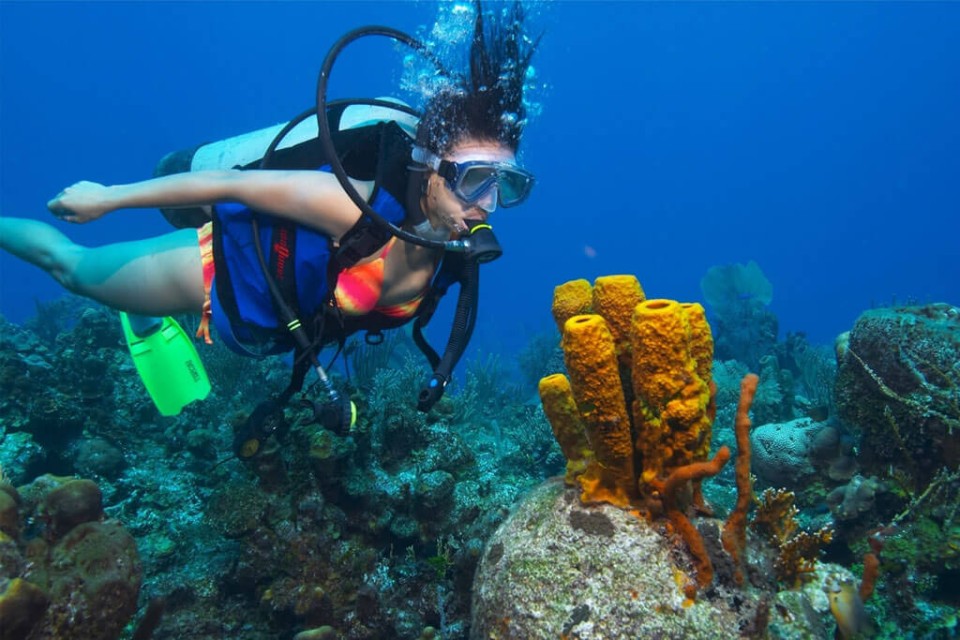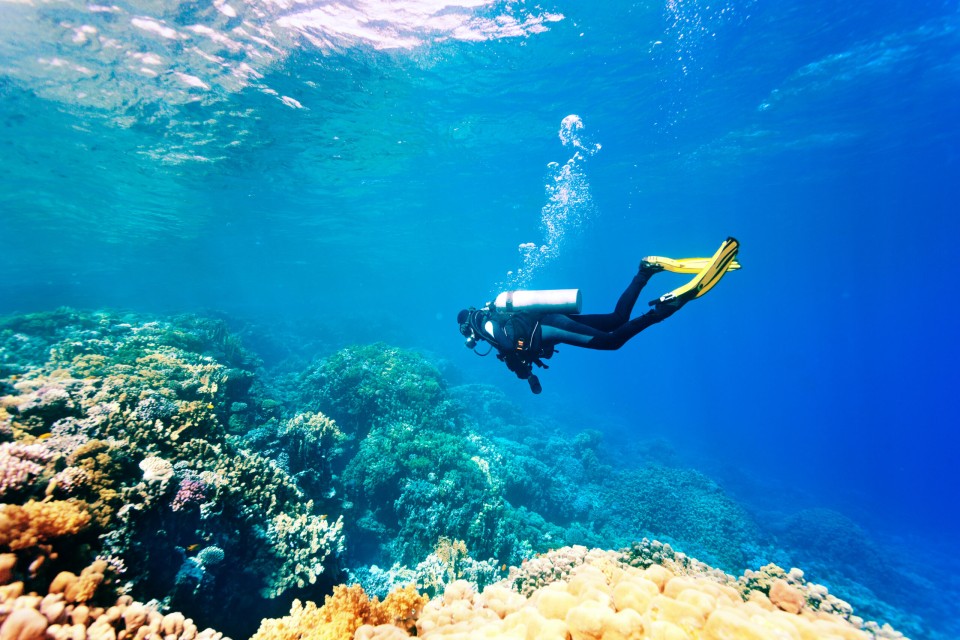Diving Sites in Port Blair











6 Dives Scuba Diving Packages
If you’re into travelling and love being near the sea, you probably already know that one dive never feels like enough. That’s why we’ve put together six dives at six different spots. Each place has something different to see. It’s a solid pick for anyone who just enjoys being underwater. It delivers a full-bodied, immersive journey across six expertly curated dive sessions. Over about five hours, you'll visit a selection of the Andaman’s finest dive locations, with plenty of time for rest, boat rides, preparation, and safety briefings in between.
The people who take you diving know their stuff. They keep it safe, but don’t make it boring. You just step into the water, see incredible things, and come out feeling like it mattered. It’s not some fancy tour—it’s just real, and it sticks with you.
What Makes Havelock Island a Diver’s Dream
I didn’t know what to expect with Havelock, or Swaraj Dweep, but what hit me first was the water. It’s ridiculously clear. Not in a poetic way — just in that plain, honest way where you look over the side of the boat and see straight down, no guessing, no haze, just coral and sand and fish like they’re waiting. I remember thinking, “This might be the clearest water I’ve ever seen.” And it’s warm too — not hot, not cold, just enough that you don’t think about it. You’re not rushing to get out or shivering through the dive. You just stay, and it’s comfortable.
Every dive felt different. Some were packed with coral that looked untouched, some had these old wrecks that made everything go quiet for a second, and one site just dropped off — no bottom in sight, just blue. You’re floating above this massive nothing, and it’s kind of peaceful and weird and beautiful all at once. It wasn’t a tour with checkpoints. It felt more like exploring.
Nothing flashy about the setup — and that’s what made it better. Boats were fine, gear worked, and no one tried to make a big show out of anything. The dive guys knew their stuff, kept it safe, but let you do your thing. No one hovered. No one talked too much. You felt like they trusted you just to be there, and somehow that made the whole thing feel more real. It’s not the kind of place that shouts at you to remember it. But you do.
Everything That’s Included in Your Package
This package is more than just a series of dives—it’s a complete experience crafted with attention to every detail. We’ve taken care of everything so you can focus solely on your adventure beneath the surface.
Your package includes:
- Six fully guided scuba dives at handpicked dive sites around Havelock Island
- Complete scuba gear setup including BCD, regulators, air tanks, masks, fins, and wetsuits
- Pre-dive briefings and continuous support throughout the dive from certified instructors
- Personalized attention with a maximum ratio of two divers per instructor
- Complimentary underwater photos captured with professional GoPro equipment
- Pick-up and drop-off from accommodations located within 3 kilometers of the dive center
- Refreshments and drinking water are provided on the boat between dive intervals
- A pool training session to help you get comfortable before the actual dives
- Emergency oxygen and first-aid on board as part of our commitment to safety
- Access to post-dive support facilities, including changing rooms and showers
Dive Site Line-Up: Each Location with Its Soul
Each of the six dives is done at a different spot around Havelock. These places aren’t chosen just because they look good on paper — they’ve been picked over time because of what they offer underwater. It’s not just about variety for the sake of it; it’s that each site gives you a different kind of moment. One might be deep and quiet, another might be fast and full of movement, and another might be all about the small stuff. That’s what makes the whole day feel like a journey instead of just six dives one after another.
Whitehouse Rock
It comes up like a big hill from the bottom, then just drops off deep. You’re kind of floating next to these huge coral towers. The water’s usually really clear. Sometimes you see groupers or big fish passing by. It’s quiet down there, you don’t feel like talking much, just kind of take it in.
MV Mars Shipwreck
It used to be a wooden cargo boat. Now it’s just sitting down there, pretty deep, maybe around 20 to 30 meters. Coral’s growing on all of it, and fish are everywhere. You swim through parts of it. It doesn’t feel like a wreck anymore — it feels like it belongs there.
S.S. Inchkeith
Another wreck, but not about size — it’s all about the small stuff. You go slow on this one. Nudibranchs, scorpionfish, little things tucked into rust or coral. You’ve got to look carefully or you’ll miss half of it.
Broken Ledge
It’s not deep. Rocky ledges with coral here and there. A lot of natural light. You can spot turtles sometimes. Not much current. Pretty relaxed dive, no stress.
Jackson Bar
You jump in and let the current move you. It’s a drift dive, so you don’t swim. Just glide. Sometimes rays come by. It’s quick, and you’re kind of flying through it, which feels exciting.
Red Pillar
Last dive of the day, usually. It’s shallow, probably 10 to 15 meters. The slope is going down slowly. Small reef fish, clownfish, that kind of stuff. It’s quiet. Not much happening, but that’s the point. Good to end on.
A Journey That Balances Exploration and Safety
What sets this apart is how well everything is organized. It’s not just a collection of random dives. There’s a well-established plan. All dives are performed by individuals who thoroughly understand the sites and can handle any situation that arises. Doesn’t matter if it’s a reef or a wreck — someone’s always there watching, guiding, helping. Before the first dive, they sit you down, explain how it’s going to go, the safety stuff, how to signal underwater, and a bit about not messing with marine life. The gear’s already checked, all in good condition, nothing dodgy. You get breaks between dives, enough time to sit down, breathe, drink some water, and eat something. The instructor is with you the whole time, just quietly checking if you’re alright. It’s not rushed. They don’t push you. You'll proceed at a steady pace and finish all six without feeling overwhelmed.
How the Day Progresses: Smooth, Safe, and Structured
The day starts with a pickup from your hotel. Then you get your gear sorted and go through a short orientation. After that, you get on the boat and head out to the first two dive spots. Before each dive, someone tells you what to expect and answers any questions. Once those dives are finished, you relax on the boat — there are snacks and drinks, and you just sit back, enjoy the breeze, maybe chat with a few people. In the afternoon, you finish the remaining four dives. There’s enough rest between each session, and your instructor checks in with you afterward. The entire process moves at a relaxed pace. Nothing rushed. Just a full day out there, underwater and in between, and it all kind of flows on its own.
Marine Life Encounters to Remember
You go down, and everything just slows down. First thing you see, usually, is clownfish — they hang around anemones and move in that quick jerky way like they’re guarding it. Sometimes, out of nowhere, a turtle glides past and keeps going, not even noticing you. Parrotfish are loud if you’re close, always biting at coral.
Batfish also appear; they hover briefly, seeming curious. Look under ledges, and you might see a white-tip shark just lying there, barely moving. And once in a while, if you’re lucky, a manta ray shows up doesn’t stay long, but it makes the whole dive worth it. Then there’s the smaller stuff. Nudibranchs, weird little things you only notice if you’re looking. Sea fans waving around, coral that looks like it’s breathing when the current moves through. Every dive’s different. That’s why people come back.
Conservation and Responsible Diving
We don’t just take people out for a dive and leave it at that — one of our priorities is making sure people understand how to dive safely without causing harm. Before you even get in the water, the team runs you through a few things — not a big talk, just clear and straight — don’t touch the coral, don’t mess with the marine life, don’t stir up the sand near the reef, and don’t leave anything behind. It’s not about following rules for the sake of it, it’s just about being responsible in a place that’s already under pressure. We also ask people to use reef-safe sunscreen because regular products harm coral, and most people don’t think about that. And yes, we keep a no-touch policy during dives — not to be strict, but to preserve this place as it is. It’s not some campaign. It’s just the basics. If everyone dives with a little awareness, things stay intact — and that’s the whole point.
Booking and Preparation Tips
Booking is straightforward—you provide your dates, and we confirm them. If your plans change — happens all the time — we adjust. The best time to come is from October to May. Water’s calmer, clearer, just better for diving overall. Once you’re booked, we verify your accommodation, arrange your pickup, and confirm your dive certification details so everything is prepared. Before the dive, avoid drinking the night before. Get good sleep, hydrate, and keep it simple. You’ll just feel better underwater. On the day, bring swimwear, a towel, your cert card, and sunscreen — the reef-safe kind, if you’ve got it. Dive log if you’re using one. That’s all you need. Everything else is on us — gear, transport, dive plan, all taken care of. You just show up, breathe, and enjoy. That’s it.
X
Enquire Now
X
Book Now
Diving Sites in Port Blair
Diving Sites in Havelock Island
Diving Sites in Neil Island